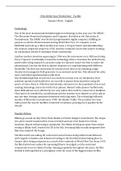Summary
OHR samenvatting all the needed reading chapters
- Module
- Institution
- Book
This summary covers all the important chapters covered in the second block. This summary is also useful for answering the questions in the Solmade project.
[Show more]













